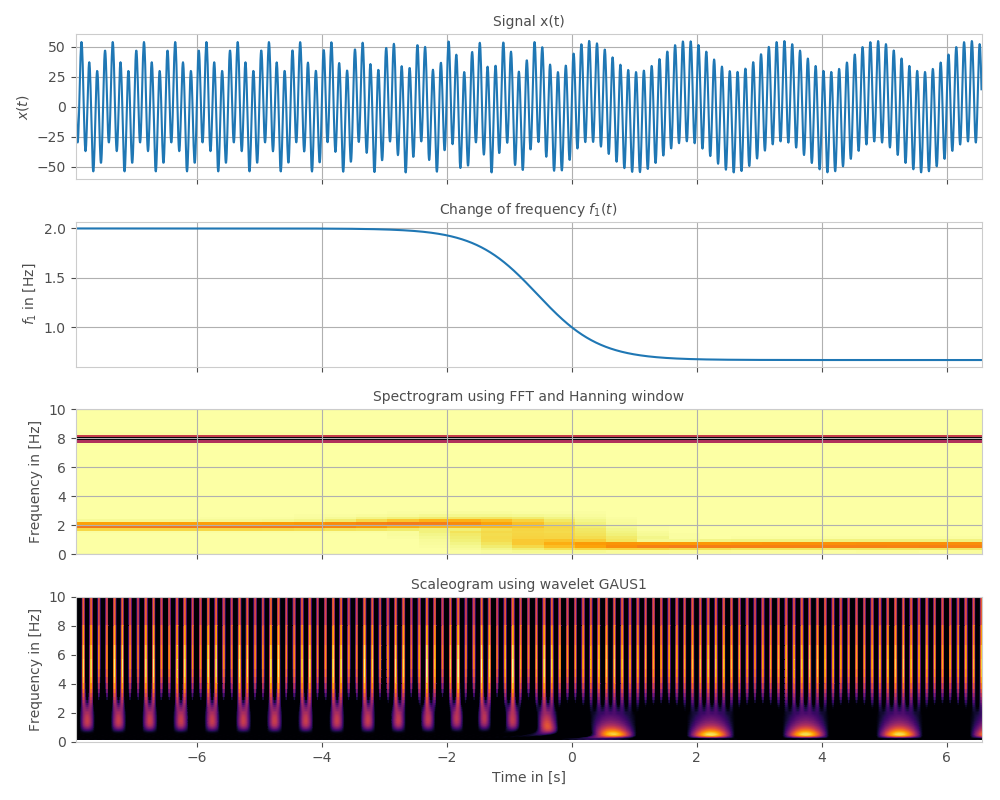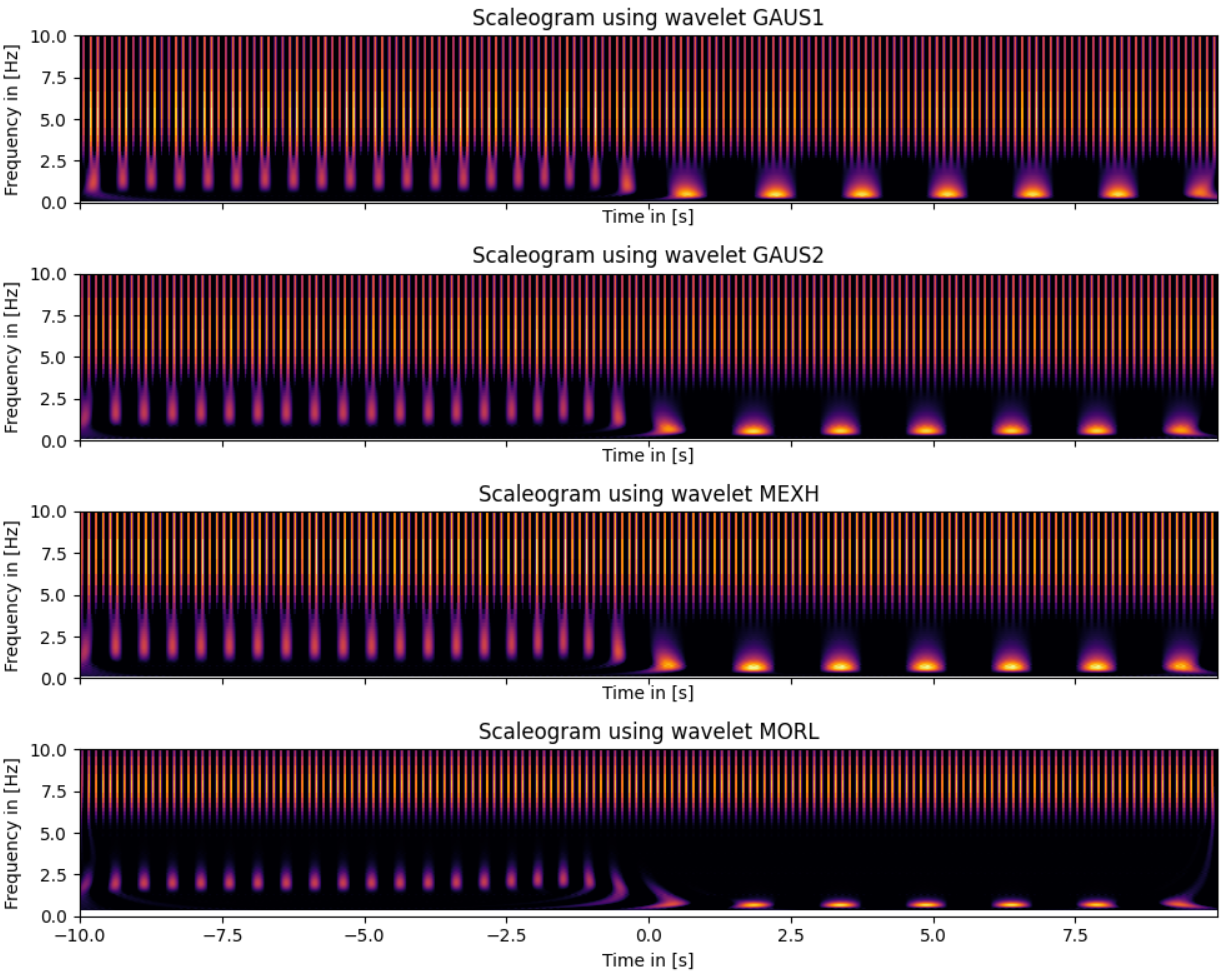I am comparing FFT vs. CWT for a specific signal.
It is not clear to me how to read of the respective frequencies and amplitudes from the corresponding scaleogram of the CWT. Furthermore, I have the impression that the CWT is quite imprecise?
The spectrogram seems to be quite good in predicting the precise frequencies, but for the CWT, I tried many different wavelets and the result is the same.
Did I oversee something? Is this just not the appropriate tool for this problem?
Below, you find my example sourcecode and the corresponding plot.
import matplotlib.pyplot as plt
import numpy as np
from numpy import pi as π
from scipy.signal import spectrogram
import pywt
f_s = 200 # Sampling rate = number of measurements per second in [Hz]
t = np.arange(-10,10, 1 / f_s) # Time between [-10s,10s].
T1 = np.tanh(t)/2 + 1.0 # Period in [s]
T2 = 0.125 # Period in [s]
f1 = 1 / T1 # Frequency in [Hz]
f2 = 1 / T2 # Frequency in [Hz]
N = len(t)
x = 13 * np.sin(2 * π * f1 * t) + 42 * np.sin(2 * π * f2 * t)
fig, (ax1, ax2, ax3, ax4) = plt.subplots(4,1, sharex = True, figsize = (10,8))
# Signal
ax1.plot(t, x)
ax1.grid(True)
ax1.set_ylabel("$x(t)$")
ax1.set_title("Signal x(t)")
# Frequency change
ax2.plot(t, f1)
ax2.grid(True)
ax2.set_ylabel("$f_1$ in [Hz]")
ax2.set_title("Change of frequency $f_1(t)$")
# Moving fourier transform, i.e. spectrogram
Δt = 4 # window length in [s]
Nw = np.int(2**np.round(np.log2(Δt * f_s))) # Number of datapoints within window
f, t_, Sxx = spectrogram(x, f_s, window='hanning', nperseg=Nw, noverlap = Nw - 100, detrend=False, scaling='spectrum')
Δf = f[1] - f[0]
Δt_ = t_[1] - t_[0]
t2 = t_ + t[0] - Δt_
im = ax3.pcolormesh(t2, f - Δf/2, np.sqrt(2*Sxx), cmap = "inferno_r")#, alpha = 0.5)
ax3.grid(True)
ax3.set_ylabel("Frequency in [Hz]")
ax3.set_ylim(0, 10)
ax3.set_xlim(np.min(t2),np.max(t2))
ax3.set_title("Spectrogram using FFT and Hanning window")
# Wavelet transform, i.e. scaleogram
cwtmatr, freqs = pywt.cwt(x, np.arange(1, 512), "gaus1", sampling_period = 1 / f_s)
im2 = ax4.pcolormesh(t, freqs, cwtmatr, vmin=0, cmap = "inferno" )
ax4.set_ylim(0,10)
ax4.set_ylabel("Frequency in [Hz]")
ax4.set_xlabel("Time in [s]")
ax4.set_title("Scaleogram using wavelet GAUS1")
# plt.savefig("./fourplot.pdf")
plt.show()


